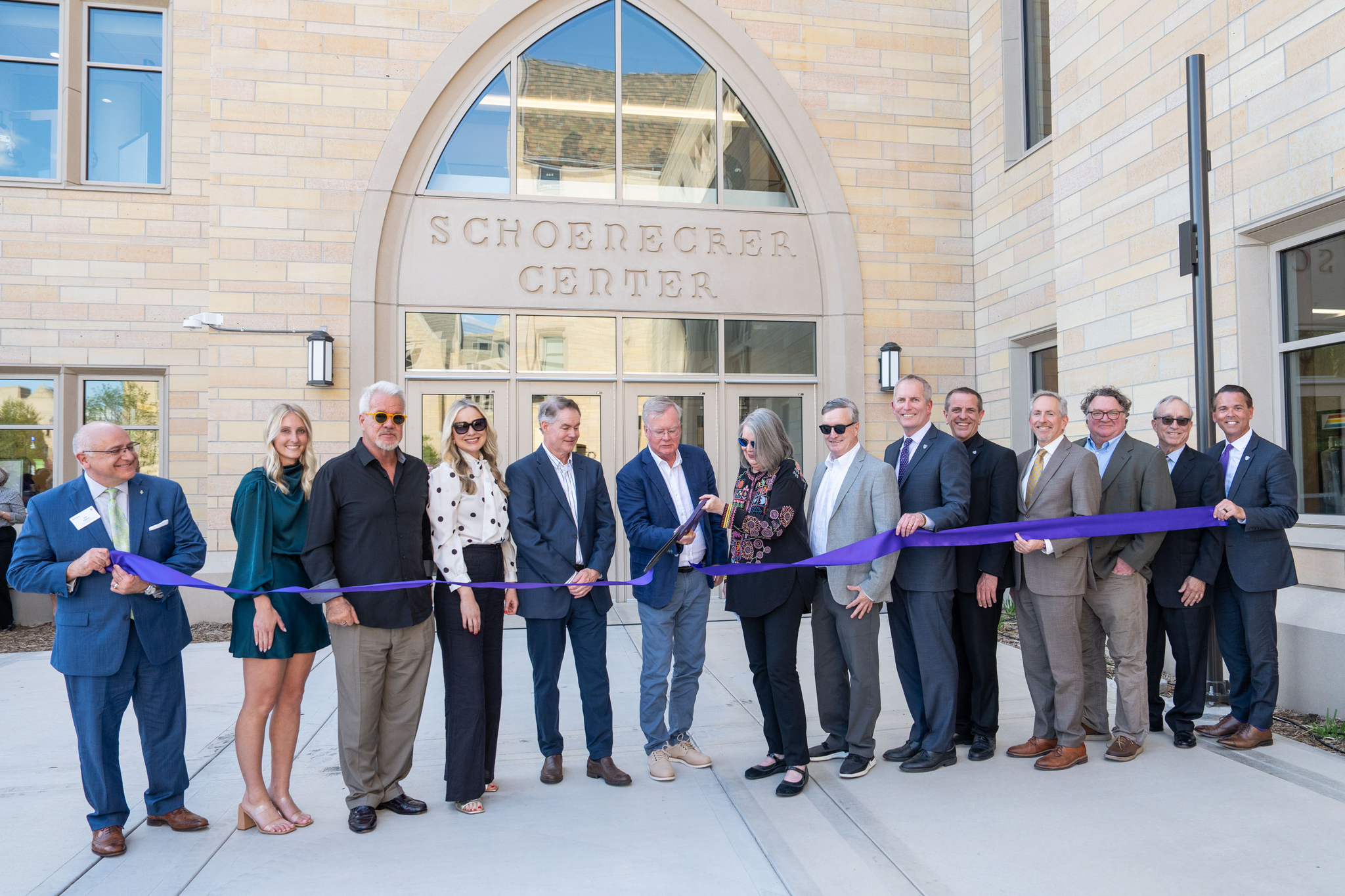As the St. Thomas community came together on May 8 to dedicate the Schoenecker Center, the university’s new home for STEAM education, faculty, staff and students made it clear: Bold, interdisciplinary learning is already alive and thriving within its walls.
University leaders, the Board of Trustees and the building’s many benefactors attended the Schoenecker Center’s official dedication ceremony – complete with a ribbon-cutting and blessing – before heading inside for a hands-on open house. The 130,000-square-foot facility is designed to foster collaboration between disciplines, housing dedicated spaces for the arts, engineering and sciences.
“By bringing these disciplines together in one majestic building, by facilitating the integration of knowledge, we have created a venue where every day our students will be empowered to discern how their gifts and passions and values and life experiences come together to connect with the world's needs in meaningful ways,” President Rob Vischer said. “In other words, we will be equipping students to lead lives of purpose.”
Twenty-six members of the extended Schoenecker family attended the dedication. Named in honor of Guy ’49 and Barbara Schoenecker, the new academic complex deepens the family's already storied legacy at St. Thomas. Their latest gift is expected to transform the base of the university’s liberal arts foundation and serve as a national model for STEAM education.
“This building is designed with spaces that promote the melding of ideas and disciplines to create innovation and innovation is essential to change,” Lisa Anderson ’83 MA said, daughter of Guy Schoenecker and member of the St. Thomas Board of Trustees. “This is a really exciting space to help prepare students for the next set of challenges that come their way.”

The building’s doors first opened to students in February and no moment has been wasted. Together, 11 academic departments have filled the facility’s vast and varied spaces, which include everything from chemistry labs and a music performance hall to a robotics lab and student media newsroom. Taken together, they are designed to foster creative collision at every turn.
Open house guests explored demonstrations from the College of Arts and Sciences and the School of Engineering on all five levels of the building. In the Iversen High Bay, a light-framed timber wall was tested by budding engineers for its structural integrity, while next door in the John P. Monahan Gallery, a new art exhibition was on display.
On the third floor, autonomous robots could be seen wandering the new Michael J. Hoffman and The Toro Company Digital Systems Lab. Hoffman ’88 is the former chairman and CEO of The Toro Company and called the new STEAM complex a game-changer for higher education.

“The Schoenecker Center isn’t just a building, it’s a catalyst for change,” Hoffman said. “It is a space where students will develop the knowledge and skills they need to thrive in today’s world: critical thinking, collaboration, innovation and hands-on experience.”
The STEAM complex was developed alongside industry and corporate partners, including The Toro Company, as they look to hire students who are flexible, creative thinkers. With an emphasis on interdisciplinary experiences, students will learn to be nimble and flexible as they train for new and emerging career opportunities.
Neuroscience major Gracelyn Riedel ’24 has spent much of her final semester studying in the Schoenecker Center and its new chemistry suite as she prepares for medical school.

“The versatility of this space has created a presence that is just inviting to all students … it’s set up to create really successful Tommies,” Riedel said. “After I walk out of St. Thomas this spring, I know the growth and change here will continue, but I’m so thankful to have been part of this pivotal moment.”
The building itself was a mammoth interdisciplinary project. More than 150 people from dozens of St. Thomas departments were involved in its design. The university’s first new academic building since 2006, the Schoenecker Center proved a particular challenge, with each of its spaces demanding different physical characteristics.
Mechanical Engineering Professor Dr. Genevieve Gagnon helped design the clean materials lab, which features open lab space for student collaboration, special microscopes and a fume hood. At the open house, she showed off the lab’s tensile testing machine – which pulls different materials to their breaking point.
“When you have the space and the equipment you need, you spend a lot less time worrying about the logistics of getting everything together, and a lot more time focusing on the students and their learning,” Gagnon said. “This space is heaven, and I think the students are really appreciating what we can accomplish here, too.”







